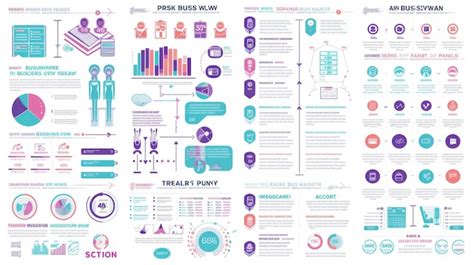Introduction

Digital transformation (DTM) has become an imperative for businesses seeking to thrive in the modern digital landscape. While organizations typically progress through various stages of DTM, Stage 4 represents an advanced level of digital maturity characterized by a comprehensive integration of digital technologies across all aspects of operations and strategy. This guide provides a comprehensive overview of Stage 4 DTM, outlining its key characteristics, benefits, challenges, and effective strategies for successful implementation.
Key Characteristics of Stage 4 DTM
Organizations at Stage 4 DTM demonstrate the following key characteristics:
- Ubiquitous Digital Integration: Digital technologies are seamlessly integrated into every aspect of the business, from operations to customer engagement to strategic decision-making.
- Data-Driven Decision-Making: Data and analytics play a central role in driving business decisions and optimizing processes.
- Agile and Scalable Infrastructure: Technology infrastructure is agile, scalable, and adaptable to meet rapidly changing business needs.
- Customer-Centric Focus: Digital transformation is driven by a deep understanding of customer wants and needs.
- Digital Culture: There is a strong digital culture throughout the organization, with employees embracing new technologies and embracing innovation.
Benefits of Stage 4 DTM
Organizations that successfully implement Stage 4 DTM experience numerous benefits, including:
- Improved Operational Efficiency: Digital technologies streamline processes, automate tasks, and reduce redundancies, leading to improved efficiency.
- Enhanced Customer Experience: Data and analytics enable businesses to personalize interactions, improve customer satisfaction, and foster loyalty.
- Increased Innovation: The agile and scalable infrastructure of Stage 4 DTM supports rapid experimentation and the development of new products and services.
- Competitive Advantage: Organizations at Stage 4 DTM gain a competitive edge by leveraging digital technologies to differentiate themselves in the market.
Challenges of Stage 4 DTM
While Stage 4 DTM offers significant benefits, it also presents several challenges:
- Legacy Systems Integration: Legacy systems can hinder digital integration and data sharing, requiring careful planning and migration strategies.
- Skills Gap: Organizations may face a talent shortage of skilled professionals who possess the necessary digital expertise.
- Data Overload: Managing and analyzing vast amounts of data can be overwhelming, leading to potential data fatigue and decision paralysis.
- Cost of Implementation: Stage 4 DTM requires significant investment in technology, infrastructure, and expertise, which can strain budgets.
Effective Strategies for Stage 4 DTM Success
Organizations aiming to achieve Stage 4 DTM can adopt the following effective strategies:
- Embrace a Customer-Centric Mindset: Focus on understanding and meeting the evolving needs and expectations of customers.
- Invest in Data Infrastructure: Establish a robust data infrastructure that enables efficient data collection, storage, and analysis.
- Foster a Digital Culture: Create a workplace that values innovation, collaboration, and continuous learning in digital technologies.
- Collaborate with External Partners: Leverage partnerships with technology vendors, consulting firms, and academia to access expertise and accelerate digital transformation.
Table 1: Benefits of Stage 4 DTM
| Benefit | Description |
|---|---|
| Improved Operational Efficiency | Streamlined processes, automated tasks, reduced redundancies |
| Enhanced Customer Experience | Personalized interactions, improved satisfaction, increased loyalty |
| Increased Innovation | Rapid experimentation, development of new products and services |
| Competitive Advantage | Differentiation in the market, gaining an edge over competitors |
Table 2: Challenges of Stage 4 DTM
| Challenge | Description |
|---|---|
| Legacy Systems Integration | Hinders digital integration and data sharing |
| Skills Gap | Talent shortage of skilled professionals with digital expertise |
| Data Overload | Overwhelming amount of data can lead to data fatigue and decision paralysis |
| Cost of Implementation | Significant investment in technology, infrastructure, and expertise |
Table 3: Effective Strategies for Stage 4 DTM Success
| Strategy | Description |
|---|---|
| Embrace a Customer-Centric Mindset | Focus on understanding and meeting evolving customer needs |
| Invest in Data Infrastructure | Establish a robust data infrastructure for efficient data collection, storage, and analysis |
| Foster a Digital Culture | Create a workplace that values innovation, collaboration, and continuous learning in digital technologies |
| Collaborate with External Partners | Leverage partnerships with technology vendors, consulting firms, and academia for expertise and acceleration |
Table 4: Key Characteristics of Stage 4 DTM
| Characteristic | Description |
|---|---|
| Ubiquitous Digital Integration | Digital technologies are seamlessly integrated into every aspect of the business |
| Data-Driven Decision-Making | Data and analytics play a central role in driving business decisions and optimizing processes |
| Agile and Scalable Infrastructure | Technology infrastructure is agile, scalable, and adaptable to meet rapidly changing business needs |
| Customer-Centric Focus | Digital transformation is driven by a deep understanding of customer wants and needs |
| Digital Culture | There is a strong digital culture throughout the organization, with employees embracing new technologies and embracing innovation |
Case Study: Digital Disruption in the Healthcare Industry
The healthcare industry provides a compelling case study of Stage 4 DTM. Organizations such as Teladoc Health and Babylon Health have leveraged digital technologies to disrupt the traditional healthcare landscape, offering virtual consultations, remote patient monitoring, and personalized health plans. By embracing a customer-centric mindset and investing in data analytics, these companies have significantly improved patient experiences, expanded access to healthcare, and driven innovation in the industry.
Conclusion
Stage 4 DTM represents a pivotal stage of digital transformation, empowering organizations with advanced capabilities that drive operational efficiency, enhance customer experiences, and fuel innovation. While it presents challenges, adopting effective strategies and fostering a data-driven, customer-centric culture can enable organizations to successfully navigate Stage 4 DTM and reap its manifold benefits. By embracing digital technologies and continuously adapting to the evolving digital landscape, businesses can achieve sustained growth and competitive advantage in the modern digital era.
